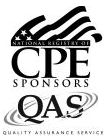Entrepreneur’s Guidebook (CPE Course)
CPE Credit: 11 hours
Course Type: Downloaded PDF materials with online test
Price (with PDF Textbook): $75
Course Description
The success rate for new businesses is quite low. The Entrepreneur’s Guidebook contains advice on how to improve the odds. It discusses how to use the entrepreneurial method to develop a more profitable business, how to find the right customer segment, the innovation techniques for developing new products and services, and the many alternatives for generating revenue. It also discusses how to write a business plan, what types of funding to pursue, which legal entity to form, the legal issues associated with intellectual property, and much more. It is the essential desk reference for entrepreneurs.
Author: Steven Bragg
Course Number: BM1016
Table of Contents
Chapter 1. The Practice of Entrepreneurship
Chapter 2. Selecting a Business
Chapter 3. Locating the Ideal Customers
Chapter 4. Entrepreneurial Innovation
Chapter 5. The Benefits of Networks
Chapter 6. Generating Revenue
Chapter 7. Entrepreneurial Marketing
Chapter 8. The Business Plan
Chapter 9. Financing a Start-Up
Chapter 10. Types of Business Entities
Chapter 11. Intellectual Property
Learning Objectives
Identify the characteristics of the ideal entrepreneur.
Specify how an entrepreneur differs from a manager.
Describe the activities of a lean start-up.
Identify how strategy is employed in a start-up business.
Specify the issues that can arise with a SWOT analysis.
Identify the various barriers to entry.
Recall the structure of the sales break-even point calculation.
Specify the cost structure that would cause the most trouble if there is a decline in sales.
Describe the contents of a profile for customer segmentation purposes.
Specify the types of strategic experiments in which company founders might engage.
Specify how to compete against other parties using innovation.
Recall the characteristics of the most successful innovators.
Recall how to create a more effective incremental innovation campaign.
Specify how to enhance an internal crowdsourcing system.
Identify the advantages associated with networking by an entrepreneur.
Recall how to qualify a founding team for a start-up.
Recall the contents of a mentoring work plan.
Specify how a mentor can improve the relationship with a mentee.
Identify the circumstances under which various pricing adjustments should be used.
Recall how markdown management software can be used to enhance margins.
Specify the revenue management activities employed by an airline.
Identify how a reference point can be used within a retail environment.
Recall how reducing prices can increase a seller’s profit percentage.
Specify how and when the different types of marketing strategies should be used.
Identify the various types of sales promotions.
Recall the components of a business plan.
Specify the issues associated with budgeting for capital spending.
Identify the flaws that can appear in a business plan projection.
Recall the elements to present in the financial projections of a business plan.
Specify the optimal length of a business plan.
Identify the options normally available for funding a start-up business.
Recall the requirements of the various types of investors when they invest in a start-up.
Specify the advantages and disadvantages of the various types of funding.
Identify the contents of a personal financial statement.
State the advantages and disadvantages of crowdfunding.
Recall when it makes sense to obtain funding from friends and family.
Specify the characteristics of the different legal forms of business.
Identify the characteristics of intellectual property.
Recall the legal justification for seizing trade secret items in the possession of another party.
Level: Overview
Instructional Method: QAS Self-Study
NASBA Category: Business Management & Organization
Prerequisites: None
Advance Preparation: None
Latest Review Date: November 2024
Program Registration Requirements: Click on "Purchase Course" near the top of this page to pay for and access the course. You will then be able to download the course as a PDF file, then take an on-line examination, and then download a certificate of completion if you pass the examination.
Program Refund Policy: For more information regarding administrative policies concerning complaints, refunds, and other matters, see our policies page.
AccountingTools, Inc. is registered with the National Association of State Boards of Accountancy (NASBA) as a sponsor of continuing professional education on the National Registry of CPE Sponsors. State boards of accountancy have the final authority on the acceptance of individual courses for CPE credit. Complaints regarding registered sponsors may be submitted to the National Registry of CPE Sponsors through its website: www.nasbaregistry.org.
The NASBA sponsor identification number for Accountingtools, Inc. is 115881.
AccountingTools is an IRS Approved Continuing Education Provider. We are compliant with the requirements for continuing education providers (as described in sections 10.6 and 10.9 of the Department of Treasury’s Circular No. 230 and in other IRS guidance, forms, and instructions). Our IRS Approved Continuing Education Provider number is 72821.


